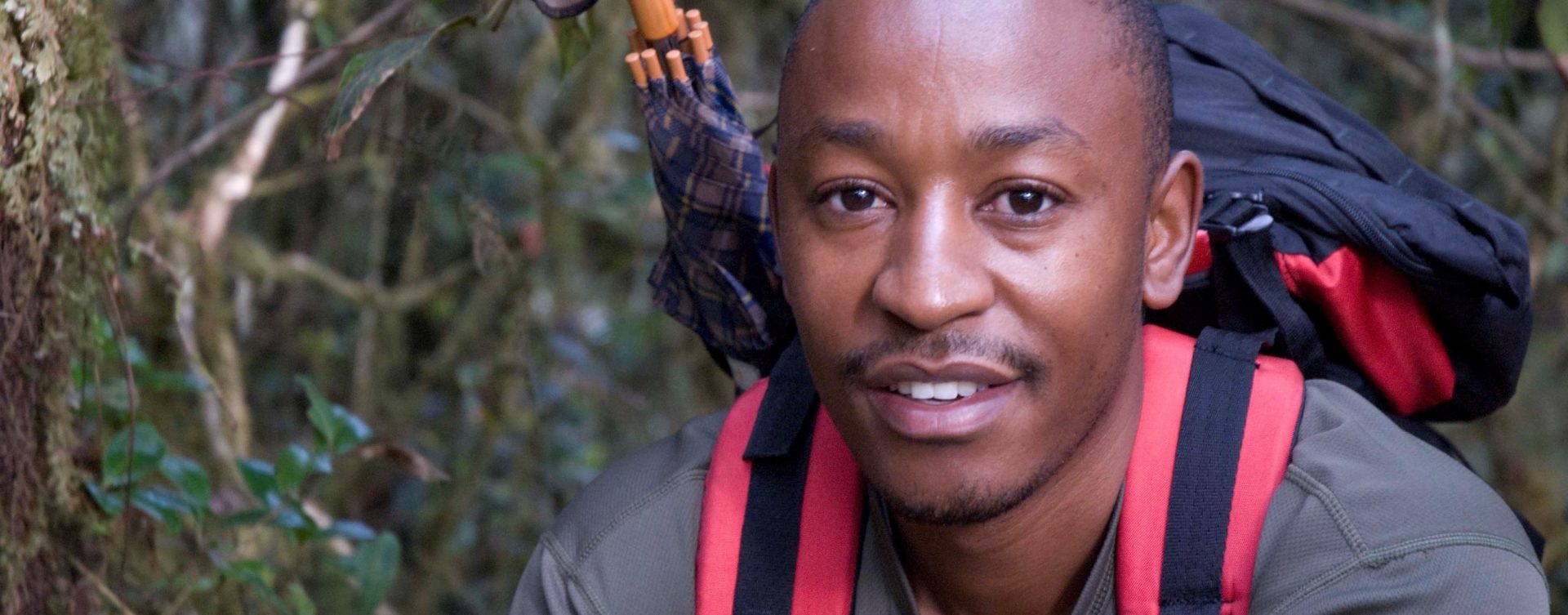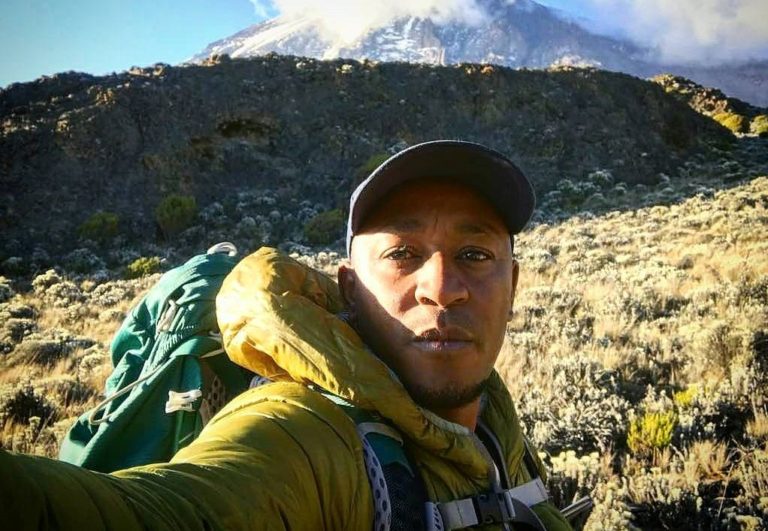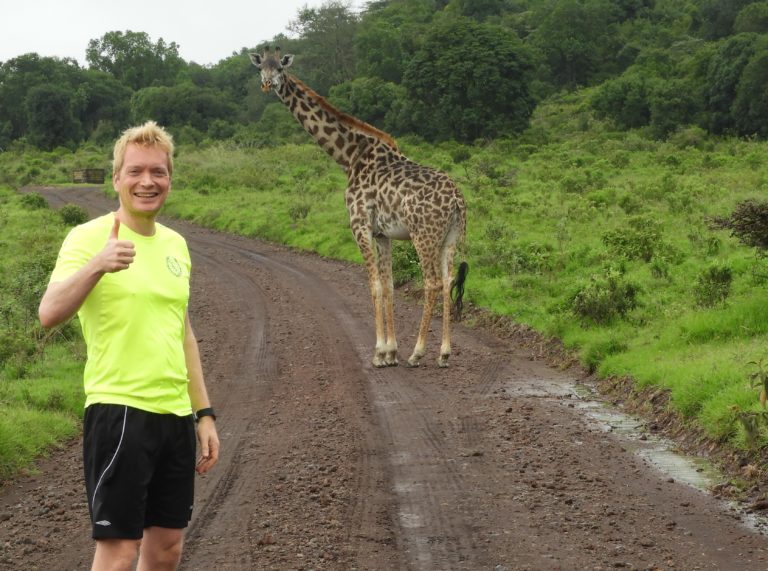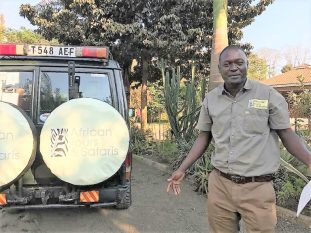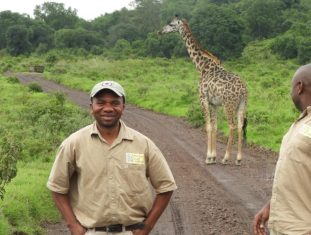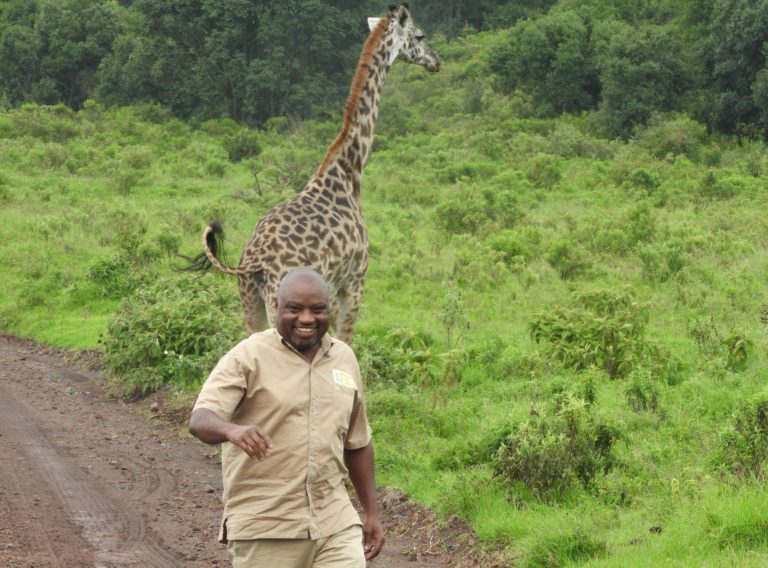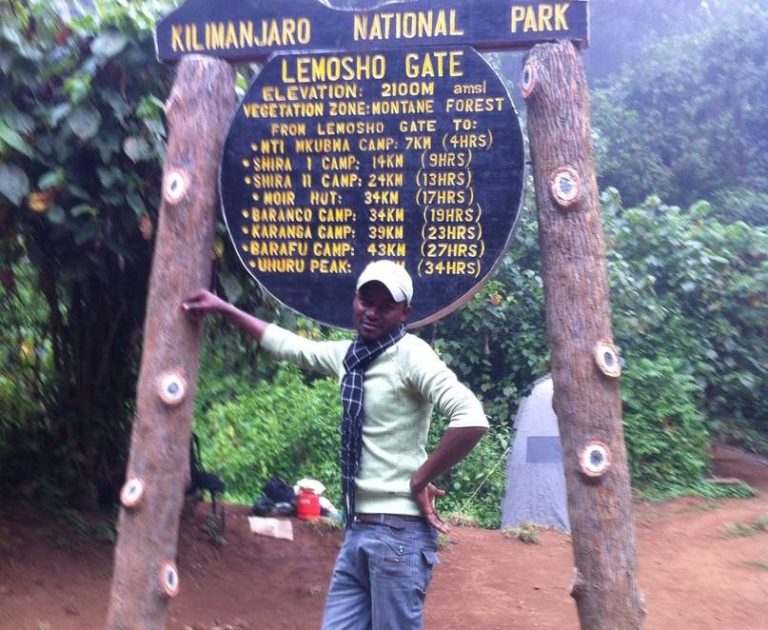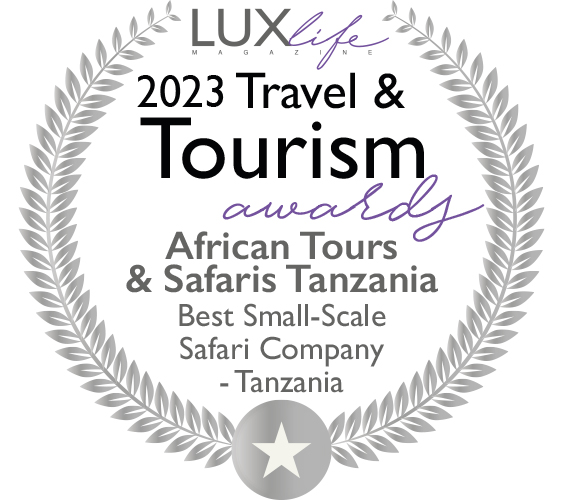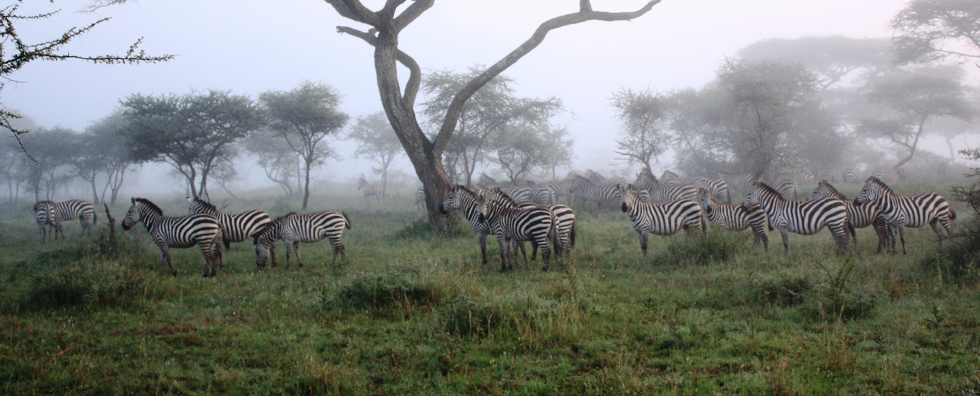About African Tours & Safaris
African Tours & Safaris is a safari agent based in Arusha Tanzania with a sales and marketing office in Sweden. We provide you with the best safaris at the best prices. We are a Tanzanian and Swedish company with offices in Tanzania and Sweden. The owners are from Tanzania and Sweden and togehter we have extensive experience in providing travelers from all over the world with the adventure of a lifetime.
Read more about usAfrican adventure – Swedish security
Welcome to Tanzania. African Tours & Safaris Tanzania (AF T and safaris Ltd) is an experienced safari and mountaineering company. We take care of the travelers from they touch down in Tanzania until they fly back home. We are always available for the clients 24/7. We have been welcoming guests to Tanzania since 2007.
AF T and safaris Ltd has Swedish and Tanzanian owners. The Swedish owners are African Tours & Safaris Scandinavia AB, belonging to one of Swedens biggest Travel Group, Intoit Travel Group. We provide you with all the Tanzanian adventures and experiences with the security of a strong and stable owner.
Reviews
From the very beginning this was a good and very well planned journey. We left a cold Sweden and were greeted at the airport in Kilimanjaro by a nice guide who took us to our hotel.
During our stay we had the same guide all the time. A man with great knowledge who told us about the nature and the animals we saw and always made us feel safe.
We really enjoyed the morning walk and it was exciting as well as brutal to see the lions hunt for food up close. We also had the great pleasure of seeing the tremendously big and beautiful water buffaloes.
The evenings spent at the camps were nice and calm and we got to sit down and talk to the other guests as well as the people who worked there. This is a journey that has given us memories for the rest of our lifes and it was a great adventure.
/Karin, Sweden
This is a journey that has given us memories for the rest of our lifes
Kilimanjaro is a mountain which will test your determination. It can be climbed in 5 to 8 days and, if you value you health, you will opt for as long a period as your wallet and time availability allow. The last camp is roughly at 4800 meters and the summit is over 5900 meters. This last day of climb is very demanding and exceeds most conventional definitions of a sound elevation increase. It is done in one day because you come back down immediately. This does not prevent many, many people from being sick and vomiting on the way up. The traces of their sickness are apparent at many, many places.
Many people are simply poorly prepared for the exertion and cold and do not summit. The temperature is well below -10oC on the last portion of the climb at any time of year and the wind chill effect can seriously compound the situation. The snow conditions vary quite a bit and can make the descent a real trial, dangerous even when there is a lot of snow and it gets icy or slick. If you have an option, take a minimum of six days, preferably seven days before summitting the next day. Although it is nice to summit at day break, doing it during the day is safer and less exerting.
The days leading up to the summit day are really not as demanding as the Everest Base Camp Trek for example which stretches out a slightly smaller altitude gain over 9 days. The Kili trek up to the last day will not leave you worn out. This is a relatively mild trek up to summit day.
The other factor is the high incidence of food poisoning in the camps. Tough cooking conditions and less than ideal hygiene habits by some companies can make you pretty sick on the trek and decrease your chances of summiting in a compressed time frame. Give yourself time.
We did the 9 day Lemosho route and loved the rain forest and the reasonable pace of elevation gain. None of our group suffered any big altitude sickness symptoms even at the summit.
This company we hired, African Tours & Safaris (formerly known as Africana Travel) is not a low cost service provider. They have a logistically sound, high quality service approach. Their guides were pleasant, knowledgeable and their porter group made us feel welcome and were very encouraging. They danced and sang every morning on the way up and down. They used the same equipment (tents, sleeping bags, toilet) as other, much higher priced outfits like Tuskers. Their logistics were irreproachable. They were also flexible when we needed more time to get added sleep or recover from the flu. They listened. They provided very good, nutritious food and as much as we could eat.
Our guide Eric Marimbo and his assistant, Pascal were knowledgeable and capable. We appreciated their guidance, experience and company.
The management of African Tours & Safaris, led by Arnold Moshi was very responsive to all our demands for info and accommodation. They also arranged for a first class safari and stay in Zanzibar.
They were a reliable source of Tanzanian logistics.
/James D, Montreal Canada
To The Top Of A Demanding Trek
I recently took part in the African Tours & Safaris June group Kilimanjaro climb, on Machame route for 7 days. To sum it up briefly, it was amazing. The day before the climb I received a full briefing from the head guide Herman. He covered the trip day by day, answering all my questions about food, equipment, weather and terrain. He then went through the clothes I had brought for the climb to make sure they were suitable.
While on the mountain, it was very clear that African Tours & Safaris offered a superior product and service to most other companies. The tent quality for our climbers and for our guides, cooks and porters were of extremely good quality. The sleeping mats were made of high density foam and not the cheap roll mats found in most camping shops which other companies seemed to favour. It meant we were very comfortable in our tents.
The food offered at each meal was exceptional. For breakfast there was always porridge, toast, eggs, fruit and often sausage or bacon. Lunch was either packed lunch boxes full of chicken, eggs, chocolate, crisps, fruit, sandwiches or a hot lunch in camp of soup, pasta, chicken etc. Dinner was always a 3 course affair of soup, meat, vegetables, potatoes, pasta or rice and a desert of fruit, cake or banana fritters. The food provided was of very good quality and plentiful. For drinks there was always a full selection of tea, coffee, hot chocolate, Milo, juice and flavoured concentrate. Each day we were also provided with snacks while walking which included chocolate, juice and biscuits. Speaking to other climbers along the route, it was clear food and drink- wise we were getting the best service of all the companies we saw.
Our eating mess tent was equipped with a gas lantern which also doubled as a heater so at meal times we were always warm. The mess tent was also available for down time, so you could be warm while reading, chatting or writing your journal.
The porters on our trip were great fun, always singing and dancing and encouraging us before, during and after each days walk. The porters were all appropriately dressed unlike many others I saw working for different, maybe cheaper companies. When you see how hard their job is, I was pleased to see our guides and porters so well looked after. I always felt safe and well briefed throughout the walking and climbing by our guides and I trusted them to make the best decisions for each person in our group.
It was clear that doing a 7 day Machame route was easier on the body than people doing a 6 day or even 5 day route up the mountain. It gave us plenty of rest time each afternoon and allowed our bodies to acclimatize well. Due to this and the luck of not getting any altitude sickness, we were all strong and healthy on summit day and successfully made it to the top before sunrise.
I would highly recommend African Tours & Safaris for Kilimanjaro climbing and if I have the chance I would definitely do it again.
/Annemarie, England
To sum it up briefly, it was amazing!
Why choose us?
African Tours & Safaris is a registered, licensed and experienced safari agent based in Arusha, Tanzania. We also have a sales and marketing office in Stockholm Sweden. For us it is all about customer satisfaction. We will take care of your clients and make them feel a part of the family. We are a commercial company, but we have a social heart. The protection and conservation of the amazing wilderness in Tanzania is our overarching goal. Our company strives to make a positive impact on our staff, our clients, the lives of all Tanzanians and the amazing nature and wild animals.
Red MoreFAQ
Here we have collected the most frequently asked questions prior to a trip to Tanzania, Uganda, Rwanda, Kenya or Botswana. If you can't find your questions/answer here, please contact us and we will be happy to assist you.
Tanzania is located just south of the equator and most parts of the country has a tropical climate. However large areas of the land are highland, and these parts are somewhat cooler than the coastal areas. The central parts of the country are much drier than most tropical regions of the world and therefore the dominating landscape is savannah. The hottest months in Tanzania are between October and March and the coolest months are June and July. The mail safari areas in northern Tanzania and slightly cooler and drier than Zanzibar and Dar Es Salaam and the rest of the coastal area. In dry days places like Serengeti and Ngorongoro Crater can have cool nights.
Tanzania has three main season.
- Dry season. Roughly from the end of May until mid-November. During this period the weather is dry and sunny with only little rain. June is quite cool and often a bit cloudy but the rest of the time it is generally warm (sometimes hot) with loads of sunshine. In the beginning of the dry season (especially in June) the sky is often overcast in the mornings and the weather can be pleasantly cool. Coastal areas normally have around 25-27 degrees in the afternoons in June whereas safari areas like Serengeti and Ngorongoro get 20-25 degrees. The longer the dry season continues the hotter the weather gets. October is dry, dusty and hot.
- The short rains. From mid-november until the beginning of March. During this season rain is more frequent but it is unreliable. Heavy showers occur but often they last only 15-30 minutes and it rarely rains several days in a row. This season is the hottest of the year. This time of the year the weather is hot and humid. Afternoon temperatures often go above 30 degrees and sometimes above 35 degrees.
- The long rains. From the beginnign or the middle of March heavy rain is common, mostly in the morning and evenings. It often rains every day but dry spells of a few days or even weeks occur. The beginning of the long rains can be quite hot but the weather cools down significantly in April and May.
In Tanzania’s big parks such as Serengeti, Ngorongoro Crater, Lake Manyara and Tarangire you will can many animals including
- lion
- leopard
- buffalo
- elephant
- rhino
- ostrich
- zebra
- wildebeest
- cheetah
- hyena
- serval
- bushbuck
- dik dik
- impala
- waterbuck
- giraffe
- hippo
- crocodile
- baboon
- warthog
- eland
- klipspringer
- hartbeast
- topi
- agama lizard
- rock hyrax
- mongoose
- Thomsons gazelle
- Grants gazelle and many more
- vulture
- marabou stork
- guinea fowl
- secretary bird
- lilac breasted roller
Any time of year between the end of May and the beginning of March is great for a safari in Tanzania. Different parks however can be better or less good at different times of the year. Seasonal parks include Tarangire (best between July and November), Ruaha (also best between July and November) and Ndutu in southern Serengeti (best between December and March). These are the best times to visit Tanzania’s most popular parks.
Serengeti – is good for safaris all year round, maybe with the exception of mid-Mrach until late May when there nay be heavy rain and muddy roads. If you want the best of the best out of your safari in Serengeti it is actually about what parts of the park you visit at what times of the year.
- Southern Serengeti (Ndutu) is at it’s best between December and March when the huge herds of the great migration is in the area.
- Western Serengeti is at i’ts best at the end of May and in June when the migration is in the area. Western Serengeti is also good during the dry season, July until October, when animals gather around the rivers and bremaining waterholes.
- Central Serengeti (Seronera) is great for safari year round except fur during the long rains (mid-March until late May)
- Northern-central Serengeti (Lobo) – is also a great safari area year round but it is at it’s best in July and November when the migration normally pass the area.
- Northern Serengeti (Kogatende) – is good year round but at it’s best between late July and October when the migration is around
Ngorongoro Crater – is good for safaris year-round but during the long rains it gets very muddy. In the beginning of the dry season, June and July it can some days be surprisingly cold in Ngorongoro Crater, especially at the rim at nights and in the morning.
Lake Manyara – the wildlife in Lake Manyara National Park is fairly consistent year round but the roads do get muddy during the long rains.
Tarangire – a quite seasonal park that is quite bad during the long rains, good during the short rains and the beginning of the dry season (June) and exceptional in the drest season, July through October. Animals in Tarangire spread out when it rains but in the dry season the gather around the Tarangire River and the wetlands in the eastern parts of the park. During those months huge herds of buffaloes, wildebeest, antilopes and elephants can be seen.
Nyerere National Park and Selous Game Reserve – the dry season is by far the best season In the adjacent parks Nyerere National Park and Selous Game Reserve as animals gather round the great Rufiji River and the lakes when small rivers and waterholes go dry. In the short rains the parks are still good but you have look more for the animals. The parks are closed for tourists during the long rains due to the risk of floodings when the Rufiji River fills up.
Mikumi National Park – the wildlife in Mikumi is fairly consitent year round but game viweing is slightly better in the dry season when small waterholes run dry and animals concentrate around the Mkata River.
Tanzania has many amazing parks that offer a variety of wildlife. In our opinions these are the best safari parks in Tanzania (not in a specific order): Serengeti National Park (including Ndutu), Tarangire National Park, Lake Manyara National Park, Ngorongoro Crater, Nyerere National Park, Katavi National Park and Ruaha National Park.
Depending on what hotel you choose the food will differ, four and five-star hotels have off course better food than the mid-range hotels. All our safari lodges and hotels have nice food. For breakfast there is normally an option between hot breakfast like eggs, omelet, sausages and beans as well as bread and cereal. There is always coffee, tea and juice. On picnic lunches on safari you a lunch box with food that is chosen based on it being able to last a day in a safari jeep. Normally you get juice, water, sandwiches, fruit, crackers and maybe a piece of candy. Dinners in safari lodges are sometimes set menus and sometime a buffet.
Our safaris are in small groups. Most of our safaris are in private groups. Normally a safari group is just one vehicle, our vehicles take a maximum of six persons, and never are they more than three vehicles. Everybody in our safari jeeps gets a window seat under a pop up roof.

